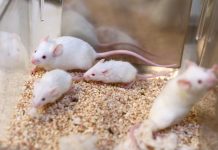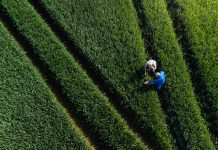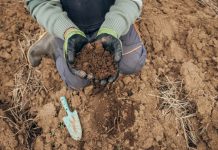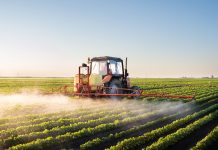Joli Rumi Borah and Terry Sunderland from the Faculty of Forestry, University of British Columbia, discuss how forests and trees play a crucial role in sustaining agriculture
Ensuring food security while conserving biodiversity still remains a pervasive global challenge. Although agriculture currently occupies about a third of the ice-free surface of the world, 0.8 billion people are still experiencing hunger worldwide. At the same time, averting biodiversity decline is a major concern with an estimated one million species facing extinction primarily caused by human activities.
Forests and agriculture, although often considered as separate or conflicting entities, are actually interlinked. Agricultural intensification and expansion are the primary drivers of global forest loss accounting for 11% of total global carbon emissions. Forest conversion negatively impacts biodiversity, reduces ecosystem resilience and also affects ecosystem services such as pollination, nutrient cycling and soil fertility that are crucial for the long-term sustainability of agriculture itself. The impacts of global climate change further exacerbate the production and nutritional value of major crops, biodiversity and ecosystem services.
Addressing forests and agriculture separately is limited in scope in terms of ensuring both food security and biodiversity conservation as increasing food production through agricultural intensification does not necessarily contribute to global food security or spare land for biodiversity conservation. This is because global food insecurity is primarily driven by inequitable access and inefficient distribution and usage of food rather than inadequate production. Moreover, production-oriented goals largely ignore the nutritional quality of food that affects 805 million undernourished people globally.
Although protected areas currently cover 14.7% of the worlds’ land area, these alone are not sufficient to halt the biodiversity crisis as many of these areas face challenges of efficient management and equity issues. Moreover, the majority of the world’s biodiversity is found in multifunctional landscape mosaics. This is why it is critical to manage landscapes in an integrated and inclusive way to achieve both biodiversity conservation and food security.
Forests sustaining agriculture
Tree-based agricultural systems are diverse. They range from trees retained on farms after clearing forests, to simple agroforestry systems such as creating alleys by planting trees or shrubs within crops (alley cropping), growing two or more crops in close proximity (intercropping) and planting hedgerows to complex agroforestry systems that mimic natural forest ecosystems. Many local communities across the world have traditionally integrated trees in agricultural landscapes in complex home gardens and tree fallows. For instance, swidden cultivators have long been managing tropical forests to support food production, biodiversity, ecosystem services and livelihoods.
Moreover, agroforestry systems are more resilient to climate change and non-climatic shocks, relative to monoculture systems such as rice or maize cultivation. Trees on farm and agroforestry systems also contribute significantly to climate change mitigation by storing up to 45.3 Pg carbon globally. These systems can potentially reduce the pressure on natural forests by meeting the demand for timber and other forest produce.
Forests and tree-based systems sustain modern agriculture directly by increasing crop and livestock productivity, providing additional income and indirectly through various ecosystem services. For example, the presence of trees on farms and forests in agricultural landscapes can contribute to livelihoods by providing food, fodder and cash income from wild harvest. Forest foods play an important role in nutrition by providing a diverse diet for forest-dependent local communities and act as an important safety net in case of crop failure. Moreover, the nutritional value of crops can increase with proximity to the forest through improved soil organic matter. Tree-based systems also provide fodder for livestock that contributes to crop production and provision of milk and meat.
Forest and trees sustain agriculture through the provision of ecosystem services that support crop production. These services include nutrient cycling, pollination, seed dispersal, soil formation, natural pest and disease control and climate and water regulation. Forests and trees contribute to crop production by reducing soil erosion and nutrient leaching. Nitrogen-fixing trees also maintain and enhance soil fertility by cycling atmospheric nitrogen, thereby increasing yields. Although many major crops are self- or wind-pollinated, wild pollinators such as bees, butterflies, birds, and bats directly affect the productivity of 75% of globally important crops. Incorporating forests and trees within agricultural landscapes creates heterogeneity in the habitat and supports diverse natural predators of crop pests, especially in perennial crops. Approximately 99% of crop pests can be controlled by natural predators and host plant resistance.
Forests and trees can increase crop productivity and resilience by improving microclimate conditions in agricultural landscapes. Trees can buffer extreme climatic fluctuations such as temperature increase that has negative impacts on crop growth. Trees in agricultural landscapes can also enhance understory growth by reducing air and soil temperature and by regulating water retention and gas exchange. However, the presence of trees on farms can also reduce crop yield by increasing relative humidity and lowering air temperature in sub-humid zones. Nevertheless, the ecosystem services of trees on and off the farm in agricultural landscapes often outweigh the disservices if incorporated effectively.
Managing landscapes for both forests and agriculture
Managing landscapes to meet bio-diversity, production and livelihood goals requires utilising synergies and managing trade-offs between forest and agriculture at both local and landscape levels. This requires a better understanding of the long-term contribution of forests and trees in sustaining agriculture and the dynamics of ecosystem service provision beyond farms in these landscapes. Similarly, as multiple ecosystem services interact with each other, it is vital to understand the simultaneous effects of these ecosystem services and their interaction on food systems. Comparative analysis across different crop systems and different geographic locations will also help to get a better understanding of the impacts of trees on agricultural landscapes.
Managing landscapes for forests and agriculture also requires developing methods for valuing ecosystem services and for integrated monitoring of livelihood, biodiversity and agricultural outcomes. In addition, integrating forests and agriculture involves trade-offs that can emerge from complex socio-ecological processes and their interactions. These need to be addressed carefully as overlooking crucial trade-offs can lead to perverse, or unintended, outcomes.
Please note: This is a commercial profile
Contributor Details
Editor's Recommended Articles
-
Must Read >> The links between forests, food security & nutrition
-
Must Read >> Conservation and the right to food













